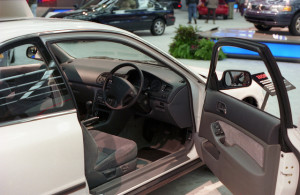Right Hand Drive in a Left Hand Drive World! – Take Two.

photo credit: dharder9475 via photopin cc
Readers have a lot to say about the previous column “Right hand drive in a left hand drive world”
Alistair, who owns and drives a RHD vehicle, did a little research and found that insurance claims on a RHD vehicle are 21.5% lower than on LHD vehicles. There is no discernable difference in the injuries sustained in crashes with RHD and LHD vehicles.
Alistair has been driving his RHD safely, around Vancouver Island for 38 years! The often quoted statistic about RHD vehicles being 40% more likely to have a crash is actually wrong. The truth of the matter, as Alistair so emphatically stated, is that RHD owners are 40% more likely to report a crash earlier than LHD owners.
From what Alistair has reported, it would seem that perceptions are more at play than reality, when it comes to the belief that right hand drive vehicles are more dangerous on North American roads.
Paul had some very insightful comments concerning his son’s purchase of a Japanese Domestic Market model. “Most of the early examples of the current trend to RHD imports were high performance cars, not previously available in Canada.” He contends that younger drivers with less driving experience, combined with high powered vehicles, may have initially had a negative impact on the number of crashes. Paul likened it to the introduction of the high performance Corvette. Lots of power and younger drivers proved to undermine the very high degree of safety options built into every such model. Crash statistics were high for very different reasons, despite the extra safety equipment and latest in technology.
Everyone, including me, seems to have a very difficult time gathering relevant statistics on the RHD vehicle issue. It leads me to be very suspicious about whether there is an “issue” at all.
Chett says he parallel parks better in his RHD SUV, because he can more easily see the curb. He also feels safer on the right side, away from oncoming traffic on a two way road.
Japanese RHD vehicles can be imported to Canada once they are 15 years old. The laws concerning vehicle ownership and insurance are very different in Japan than in Canada. Increasing insurance costs and other taxes make it financially impossible for most Japanese drivers to keep their vehicles beyond the 5 year point.
Brokers often sell these vehicles, which are over 5 years of age, to several countries in South East Asia. As of a few years ago, exporting them to Canada has become an option.
The last time I was in Japan, (I have visited 5 times in the last 20 years), I had the privilege of visiting a Toyota vehicle manufacturing facility. The emphasis on quality was obvious, as it is with not just Toyota but others manufacturers in Japan. The most interesting thing was happening on the two parallel assembly lines. One line was for domestic production and the other for export. The gauge of steel used for overseas sales was thicker than for domestic use. The use of salt on winter roads, and the tendency for Canadians to keep their vehicles much longer than the Japanese, was the reason given for this difference in the steel thickness. This fact would cause me concern for the use of RHD vehicles in northern climates. Rust may be an issue.
I should mention that several of the RHD models, that are presently imported, are not offered for sale here as new. Our national government has never allowed such open competition.
What we all need is hard data on the issue, rather than any knee jerk reaction to a perceived problem. Until such time, speculation, opinion and rhetoric shall be the order of the day!


